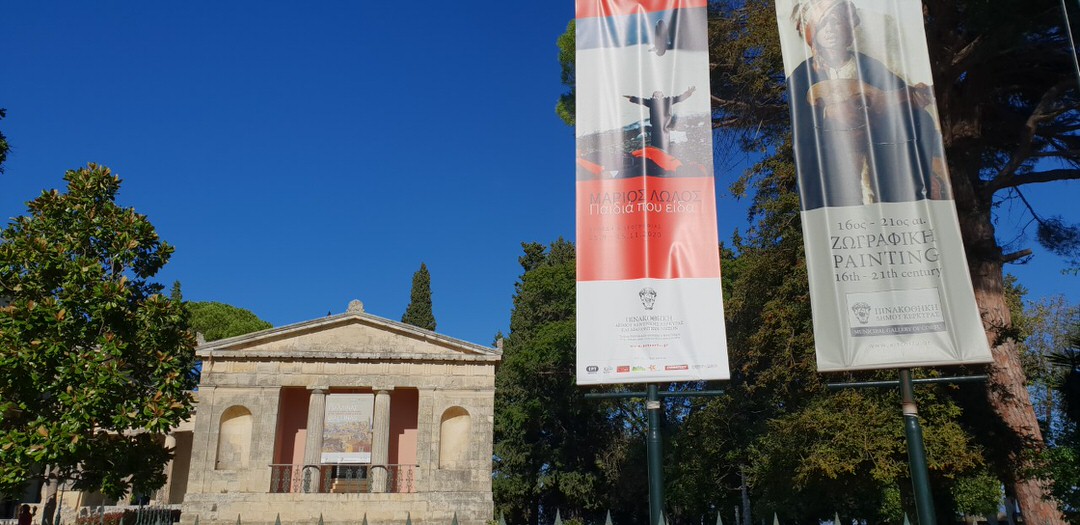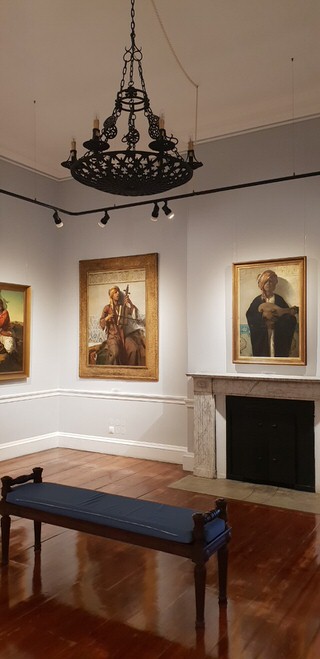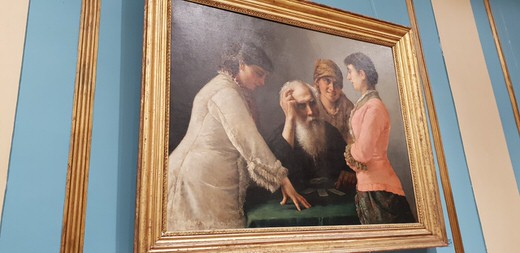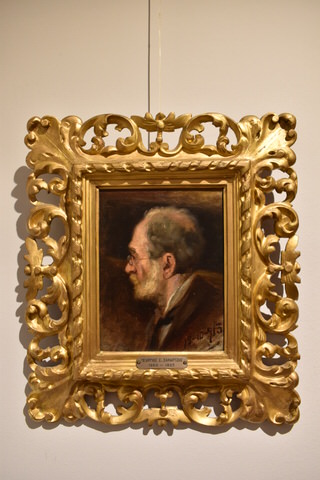The love of arts in Corfu is evident in many aspects and can be easily witnessed especially when visiting the old town and capital of the island, which since 2007 ranks among the 18 Greek World Heritage Monuments of Unesco. The main cultural areas that flourished in the course of Corfiat history are architecture, music, theatre and painting, with major influences by Venetians, French and English who had been dominating the island for more than 7 consecutive centuries. In a harmonious coexistence, many monuments of the past era, have acquired a new role and today still contribute to promoting significant elements of Corfu’s rich cultural heritage. In this context, the east wing of the imposing Palace of St Michael and St George, the former residence and dining rooms of the palace’s guards, is now the home of the beautiful paintings collections of the Municipal Art Gallery of Corfu.
In the permanent exhibitions of the 30year old gallery, that has been formed by works bought by the municipality of Corfu and also by generous offers from Ionian artists, we become acquainted with works of the most important Corfiot painters of the period from the 16th to the end of the 20th century. It is a wonderful opportunity to understand the development, evolution and influence of the artistic trends that shaped the features of painting and engraving in Corfu. The creative diversity begins with the Cretan School influence, continues with the impact of Italian masters on local artists and goes as far as French impressionism and the contemporary movement of subtraction.

The artistic journey in the gallery’s nine rooms starts in the 16th century, when many Cretan painters seeked refuge from their island that was under Ottoman occupation, to Corfu, that was protected by Venetians. These painters of the Cretan School worked in Corfu and influenced local artists in terms of both the religious themes of theirs works and the Byzantine manner they applied.
However, Corfiot artists established their own style, combining the traditional Byzantine iconography with western artistic features.
In the gallery’s 1st room, in religious themed works like the “St Steven’s martyrdom” by famous Cretan painter M. Damaskinos and “Mi mou aptou” by Em. Lambardos, we can clearly observe this mixture of different aesthetics and trends.

Enriching their thematology with cosmic scenes, adopting new techniques and taking interest in historic themes, portrait representations and landscape painting, the 18th century artists of Corfu, evolved their island into the center of the Greek artistic revival. The artists of this period take inspiration from their trips to the east and are greatly interested in depicting exotic scenes. Two excellent examples are “The fishing scene in the Nile” and the “Arab musician” by P. Prosalentis jr.
Among works of historic themes, worth noticing are “The assassination of I. Kapodistias” by Ch. Pahis and “The warrior of ‘21” by S. Prosalentis, that revive significant parts of Greek history in a dramatic tone.
Moving on to 19th and early 20th centuries, we come across an interesting turn towards portraiture. The next two rooms of the gallery are dedicated to portraits of noble men of their time, members of aristocratic Corfiot families and distinguished members of local community. The common factor among these, is the realistic depiction of their personalities, clothing and surrounding environs, which also give us a better understanding of the customs and way of living of the time. The works that stand out here are two portraits of members of the Greek royal family, King George I and Queen Olga, both by V. Bokatsiambis and the exquisite “Card reader” by P. Tsirigotis.

The same trend of realistic depictions is established in the landscape paintings too, especially those of the beginning of the 20th century, when we also witness the prevalence of water colour painting. The artists of this period, experimenting with light and colour variations, offer us lovely scenes of Corfu, capturing sides of both its old town and the countryside. Others have illustrated landscapes from their trips abroad, like the images of Italy by the most important representative of neohellenic painting, A. Giallinas. Finally, this artistic period is concluded in the gallery’s 5th room with a collection of 13 oil paintings by G. Samartzis, the most admirable one being “The piano tuner”.


The beautiful artistic journey is completed with the last 4 rooms being dedicated to 20th century Corfiat artists who studied in Athens or in other European capitals like Paris, Milan and Belgrade, with works that besides paintings include engravings and sculptures. These pioneer artists are distinguished for their individual style and either the realistic or symbolic representation of themes.
Apart from the permanent collection, the Municipal Gallery of Corfu also organises temporary exhibitions, with one of the most recent and successful ones being dedicated to the great Corfiat painter A. Giallinas. But even with a visit just to the collection’s permanent exhibits, you will be charmed by the talent and works of artists who contributed greatly to the cultural development of Corfu and left their mark in the Greek art scene.
























